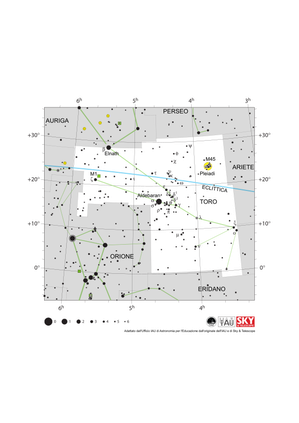Termine del Glossario Resto di Supernova
Descrizione Un resto di supernova è la struttura che rimane dall'esplosione di supernova. Consiste in un'enorme struttura di gas caldo e plasma creata dallo shock della supernova. In molti resti di supernova è presente l'oggetto compatto (buco nero o stella di neutroni) generato dalla stella esplosa in supernova, anche se in alcuni casi questo viene espulso a dalla forza generata durante l'esplosione.
L'energia esplosiva di una supernova provoca un'onda d'urto che colpisce il gas interstellare circostante. L'onda d'urto riscalda e ionizza il gas circostante portandolo a temperature estremamente elevate (oltre un milione di Kelvin). Questo gas caldo emette luce in varie lunghezze d'onda e rappresenta una fonte significativa di raggi X. Lo shock accelera le particelle ad alta velocità, rendendo i resti di supernova una fonte significativa di raggi cosmici.
Osservando la velocità di espansione di un resto di supernova, gli astronomi possono stimare il tempo necessario per raggiungere le dimensioni attuali. Questo permette agli astronomi di determinare approssimativamente quando la supernova è esplosa. Diversi grandi resti di supernova nella Via Lattea sono stati datati in questo modo e collegati a supernove osservate dagli astronomi centinaia di anni fa.
Termini correlati
Vedi questo termine in altre lingue
status del termine e della definizione La definizione originale di questo termine in inglese é stata approvata da un ricercatore astronomo e da un docente La traduzione di questo termine e della sua definizione sono ancora in attesa di approvazione
Il Glossario Multilingue OAE é un progetto dell'Ufficio IAU per la didatticadell'astronomia (OAE) in collaborazione con l'ufficio IAU OAO per la DivulgazioneAstronomica (OAO). I termini e le definizioni sono stater scelte, scritte eriviste da un impegno collettivo da parte di OAE, i Centri e i Nodi OAE e iCoordinatori Nazionali per la Didattica dell'Astronomia e da altri volontari.Potete trovare una lista completa dei crediti, Tutti i termini del glossarioE le definizioni sono pubblicate su Creative Commons CC BY-4.0 licenza e dovrebbero essere accreditate ad IAU OAE.
Se noti un errore di fatto o di traduzione in questo termine del glossario, per favore contattaci.
Diagrami correlati
Mappa della Costellazione del Toro
Crediti: Adattato dall'Ufficio IAU di Astronomia per l'educazione dall'originale di IAU/Sky & Telescope
License: CC-BY-4.0 Creative Commons Attribuzione 4.0 Internazionale (CC BY 4.0) icone
Mappa della Costellazione del Cigno
Crediti: Adattato dall'Ufficio di Astronomia per l'Educazione della IAU dall'originale della IAU e di Sky & Telescope.
License: CC-BY-4.0 Creative Commons Attribuzione 4.0 Internazionale (CC BY 4.0) icone










